<< Breaking Gender Barriers
Stars in the Making
Stars in the Making "chronicles the evolution of stars" as if "in a tremendous drama, all the more exciting because its all true." Payne then analyzes "its impact on other discoveries" (Payne-Gaposchkin [Stars in the Making]). This book showcases her knowledge of stellar evolution and all of its implications with detail unexpected from a woman at that time period.
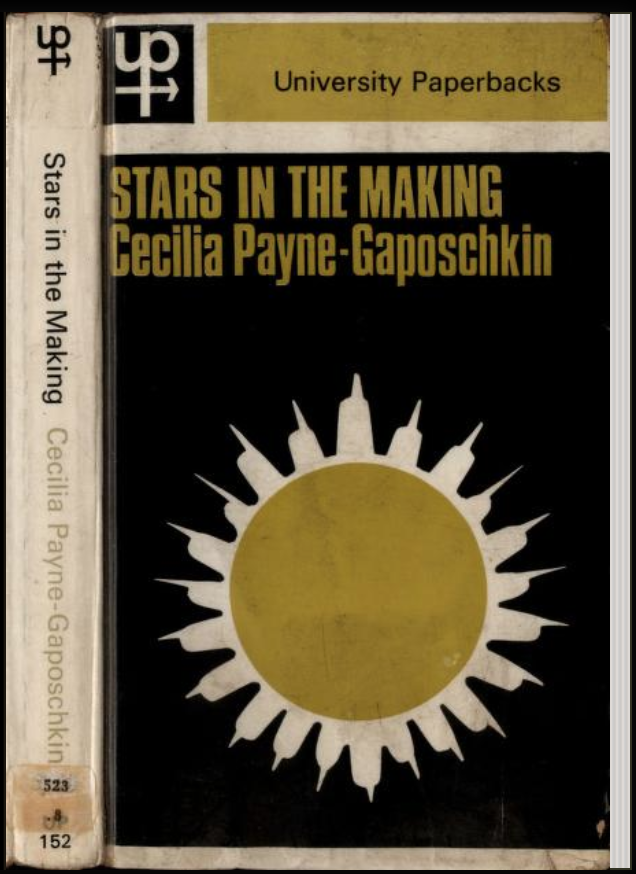
Stars in The Making [Image Courtesy Archive.org]
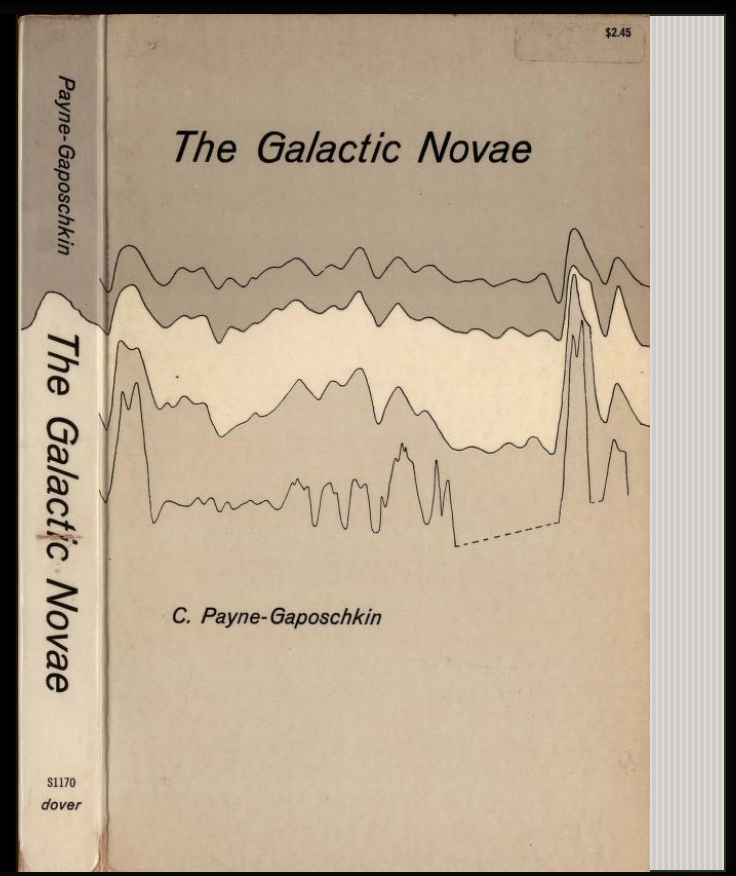
The Galactic Novae [Image courtesy Archive.org]
Galactic Novae
In Galactic Novae she "showcases a compilation of information on Novae, stars that have been recently formed by supernovas. [she] then analyses the spectra of these high luminosity stars" and their impact on her discovery (Payne-Gaposchkin [Galactic Novae]).
"There is a rough correlation between the spectrum at discovery, and the associated radial velocity: high velocities tend to go with 'early' spectra"
~Cecilia Payne-Gaposchkin
Period, Color, and Luminosity for Cepheid Variables
In "Period, Color, and Luminosity for Cepheid Variables", Payne analyzes the "properties and relationships of Cepheid Variables"
The Cepheids of the Galaxy and the Magellanic Clouds display a gradation in properties, but when amplitude as well as period is taken into account, their intrinsic colors are sensibly similar. The period luminosity relations in the three systems are probably parallel, but not necessarily coincidencal
~Cecilia Payne-Gaposchkin
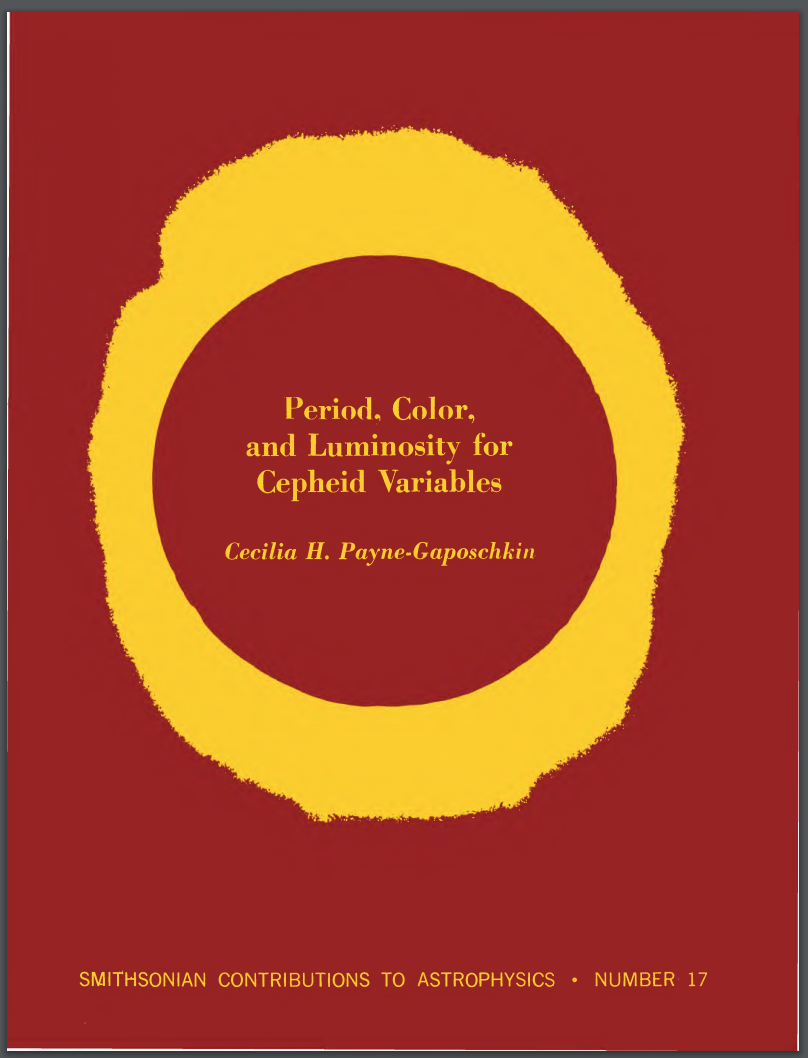
Period, Color and Luminosity for Cepheid Variables [Image courtesy Smithsonian Institution]
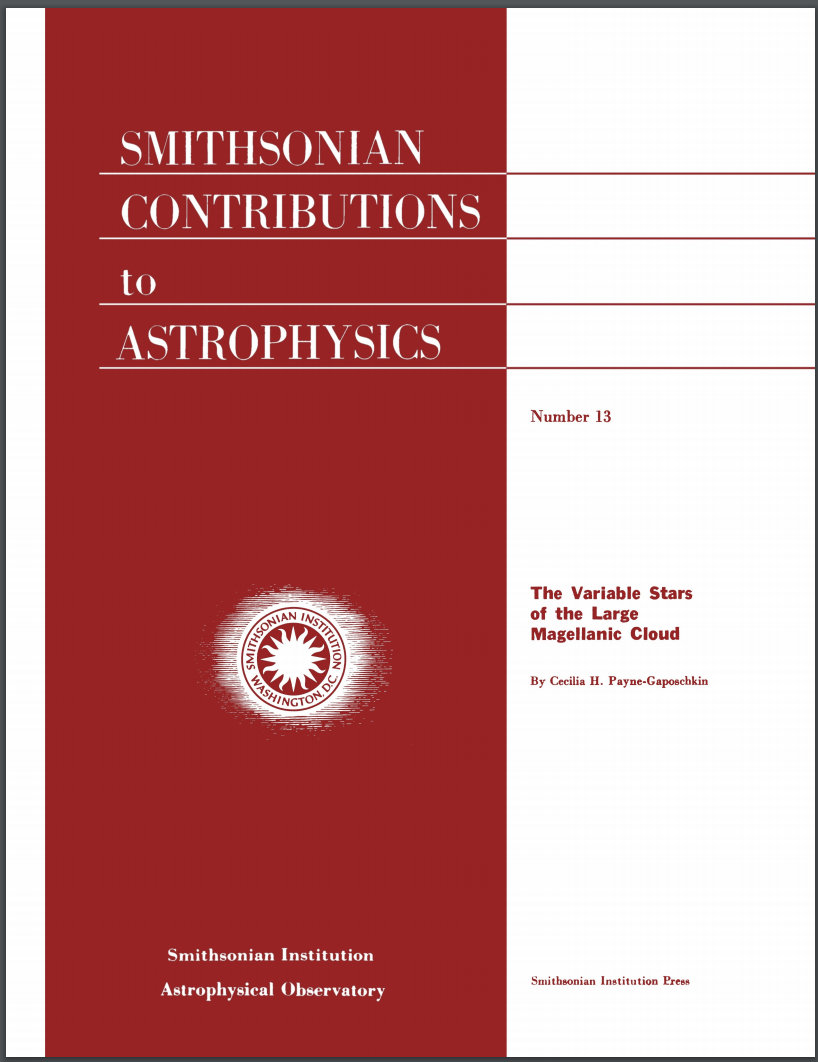
Variable Stars of the Large Magellanic Cloud [Image courtesy Smithsonian Institution]
Variable Stars of the Large Magellanic Cloud
In "Variable Stars of the Large Magellanic Cloud", Payne presents her findings in her "observations of Variable stars" with her "husband, Sergei Gaposchkin."
"We observed thousands of variable stars, comparing their properties... [to] find constants in their nature"
~Cecilia Payne-Gaposchkin
Stars and Clusters
Stars and clusters explains "the lifecycle of many stars" and they are "fluid and changing no one star will live the same life as another" (Payne-Gaposchkin [Stars and Clusters]).
"From infancy...they pass into the great "main sequence," a long and tranquil youth in which hydrogen produces radiant energy. Eventually, as main-sequence stars mature, proceeding to the denouement. This progression is, however, far from steady: any star in its lifetime will play many parts"
~Cecilia Payne-Gaposchkin
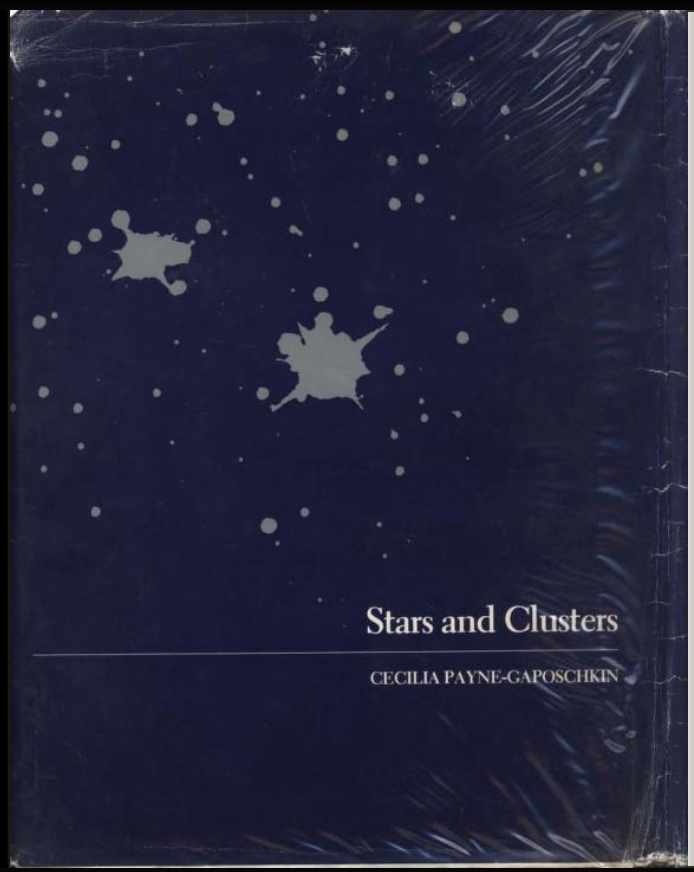
Stars and Clusters [Image courtesy Archive.org]
This discovery and analysis broke stereotypic barriers and proved that women could be capable scientists.
